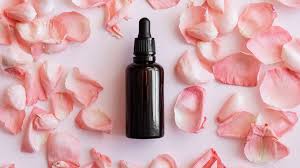
Can You Use BHA With Niacinamide? A Complete Guide
When it comes to effective skincare, understanding how to combine ingredients is key. Two ingredients that often raise questions are BHA and niacinamide.
Can you safely use both? Do they complement or conflict? Let’s explore these powerhouse ingredients and how best to incorporate them into your routine.
What is Niacinamide?
Niacinamide, also known as vitamin B3, is a water-soluble vitamin present in many foods like fish, eggs, milk, and green vegetables. In skincare, it is typically derived from grains such as yeast and cereals.
This ingredient has gained massive popularity due to its impressive results even on sensitive or reactive skin.
Niacinamide is prized for its ability to work on multiple skin concerns, making it a versatile favorite among skincare lovers.
Benefits of Niacinamide for Skin
One of niacinamide’s primary benefits is its ability to repair and strengthen the skin’s lipid barrier.
This barrier is the skin’s natural protective shield, made of lipids like ceramides, which lock in moisture and block harmful external aggressors.
Niacinamide stimulates the production of ceramides, which helps maintain a healthy barrier, allowing the skin to retain water better.
When the skin is well-hydrated, it can more effectively combat damage caused by free radicals from UV exposure and pollution.
In addition to barrier repair, niacinamide is known for regulating oil production. It balances sebum secretion from sebaceous glands, making it beneficial for both dry and oily skin types.
This balance prevents pores from clogging and reduces shine and breakouts.
Niacinamide is also effective at fading hyperpigmentation and evening out skin tone. Clinical studies show that using concentrations over 5% can produce noticeable results in as little as four weeks. It encourages collagen synthesis, which supports overall skin health and appearance.
Hydration is another crucial benefit. Niacinamide keeps the skin moisturized, reducing the appearance of fine lines caused by dehydration.
It can boost collagen production by up to 54%, promoting plumpness and a youthful texture, significantly improving wrinkles.
Thanks to these benefits, niacinamide suits a wide range of skin types and concerns, from acne-prone to aging skin.
If you want to dive deeper, the Beauty Insiders blog has a detailed post about niacinamide’s many advantages.
What is BHA?
Beta hydroxy acids (BHAs) are a group of acids derived from natural sources like fruit sugars and willow bark. The most famous and widely used BHA in skincare is salicylic acid.
Unlike alpha hydroxy acids (AHAs), which are water-soluble, BHAs are oil-soluble.
This means they can penetrate deeper into the skin’s oily layers and pores, making them especially effective for treating oily and acne-prone skin.
How BHAs Work on Skin
BHAs provide gentle chemical exfoliation by dissolving the bonds between dead skin cells on the surface. This exfoliation helps clear clogged pores and removes debris that can cause blackheads and whiteheads.
By clearing away dead cells, BHAs promote skin cell turnover and reveal a fresher, brighter complexion. They also have anti-inflammatory properties, calming acne-prone or irritated skin.
Because of their oil solubility, BHAs can penetrate deep inside pores and clear excess sebum. This action reduces the risk of breakouts and helps maintain a balanced, clearer skin texture.
Can You Use AHA, BHA, and Niacinamide Together?
Yes, but timing is key. Mixing these ingredients at the same time on the skin can alter its pH balance, leading to irritation, redness, and less effective performance from each ingredient.
For example, you could use a cleanser with an AHA like glycolic acid in the morning, then apply a salicylic acid (BHA) toner or serum in the evening.
Follow both acid treatments with niacinamide to soothe and support your skin barrier.
Spacing applications about 10 minutes apart is ideal. This waiting period lets the skin’s pH rebalance, ensuring each ingredient works optimally without overwhelming your skin.
What Should You Avoid Mixing With Niacinamide?
Niacinamide is highly versatile and safe to combine with many skincare ingredients. However, some outdated advice warned against mixing it with vitamin C (ascorbic acid).
It was once believed that niacinamide and vitamin C cancel each other out, making both ineffective. Modern research has debunked this myth, proving these two ingredients can be used together safely.
Still, when combining potent actives like vitamin C and niacinamide, it’s best to consult a dermatologist and perform a patch test to avoid irritation.
Again, waiting 10 minutes between applying different active ingredients can help reduce any risk of sensitivity and ensure maximum effectiveness.
Can I Use BHA and AHA Together?
Yes, but with caution. Some products combine both AHAs and BHAs effectively, delivering excellent exfoliation benefits.
If you have sensitive or dry skin, avoid using both acids at the same time, as this can strip your skin’s natural oils and cause irritation or redness.
A safer approach is alternating their use on different days or times of day to get benefits without damaging your skin barrier.
Many skincare lines offer separate products with AHAs or BHAs, so you can create a routine that fits your skin’s needs while preventing over-exfoliation.
Is Salicylic Acid a BHA?
Yes! Salicylic acid is the most recognized and commonly used BHA in skincare.
Available in various concentrations, it’s a dermatologist favorite for treating acne and oily skin due to its pore-penetrating abilities.
Because of its potency, salicylic acid can be too harsh for dry or sensitive skin if overused, so careful application is important.
How to Use BHA and Niacinamide Safely Together
Start slow: If you’re new to either ingredient, introduce one at a time to monitor how your skin reacts.
Alternate application times: Use BHA products in the evening and niacinamide during the day, or vice versa.
Layer with care: Apply BHA first on clean skin, wait 10 minutes, then follow with niacinamide to soothe and strengthen your skin barrier.
Moisturize: Always finish with a moisturizer to maintain hydration and protect your skin barrier.
Use sunscreen: Both BHA and niacinamide make your skin more sensitive to UV rays. A broad-spectrum sunscreen is a must daily.
Who Should Use BHA and Niacinamide?
Oily and acne-prone skin: BHA helps clear pores and prevent breakouts, while niacinamide controls excess oil and calms inflammation.
Aging skin: Niacinamide boosts collagen and reduces wrinkles; BHA promotes exfoliation to brighten dull skin.
Sensitive skin: Niacinamide can soothe and protect, but BHA should be used cautiously or less frequently.
Potential Side Effects to Watch For
Using BHAs can sometimes cause dryness, peeling, or irritation, especially if overused or if your skin is sensitive.
Niacinamide is generally well-tolerated but can cause redness or itchiness in rare cases.
If you experience any persistent irritation, discontinue use and consult a dermatologist.
Summary: Can You Use BHA With Niacinamide?
Yes, you can! They complement each other well when used properly, offering exfoliation, oil control, skin barrier repair, and anti-aging benefits.
The key is to avoid applying them simultaneously and to space out applications to keep your skin calm and balanced.
If you have any questions or want personalized advice, many skincare experts are available on social media to help you find the best routine.
Thanks for reading! Ready to transform your skincare routine with these ingredients? Let me know if you want help crafting a personalized routine or product recommendations.
Would you like me to write quick social media tips or a routine plan next? Just say the word!


